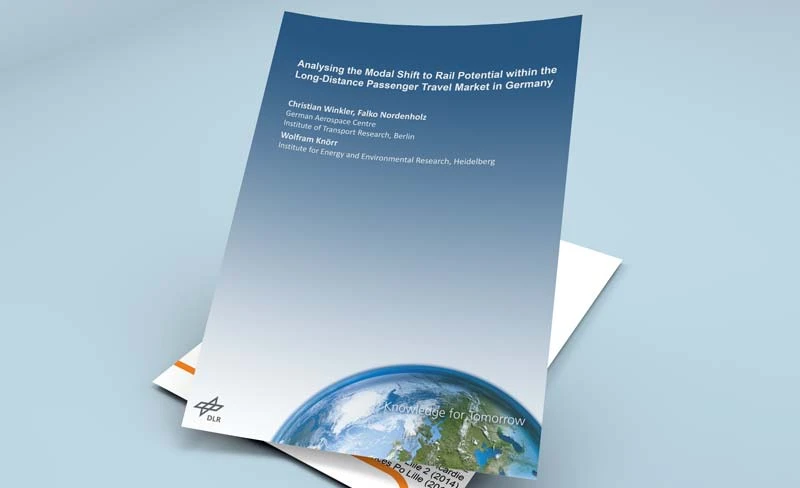-
Past ETC Papers

Browse, search and view papers from the past AET Conferences.
-
Members' Area

AET promotes networking and exchange of ideas, information and opportunities amongst members.
Conference Papers 2024
Antwerp, Belgium
ETC Conference Papers 2024
A timetable compression approach for assessing the capacity utilization of single-track sections in Sweden
Seminar
Day 1 (18 Sep 2024), Session 2, Transport Beyond Challenges: from Resilient infrastructure to Smart Solutions, 14:00 - 15:30
Status
Accepted, documents submitted
Submitted by / Abstract owner
Elin Hellblom
Authors
Elin Hellblom, KTH Royal Institute of Technology (presenter)
Dr Ingrid Johansson, KTH Royal Institute of Technology
Dr Anders Lindfeldt, KTH Royal Institute of Technology
Short abstract
In this work, we study the possibility of determining the capacity utilization for single-track railway lines in Sweden using a compression method considering train passes with and without simultaneous entry and partial releases.
Abstract
The demand for transportation by railway has never been this high and is still rising. Making space for everyone who wants to use the tracks is a considerable challenge, hence it’s important to have a consistent way of measuring the capacity and availability of the tracks in the system (Trafikverket, 2021). Capacity utilization is a general way of talking about the performance of the system. A good understanding of the capacity in strategic railway planning can be a helpful tool for decision support to evaluate the investment impact of a range of options (Liao et al., 2021). Capacity can be seen as a way of measuring how much of a certain infrastructure is used under a predefined amount of time.
A single-track line section is generally a section of the line with bidirectional traffic where two trains in opposite directions cannot be at the same time , divided by passing loops. In 2022, approximately 80% of the Swedish railway network consisted of single tracks.
Various methods can be used to measure the capacity. The guidelines from the International Union of Railways (UIC) in their capacity leaflet 406 are one of the most widely used methods for capacity calculation and suggest a compression method where, for single tracks, the line is divided into sections and then the occupation time for each train between the passing loops is compressed and measured. Landex (2009) illustrates the effect of adding more trains to a timetable and dividing the line into shorter sections on capacity.
Swedish Transport Administration (Trafikverket) uses an analytical adaptation of the UIC 406 compression method to compute the capacity utilization for lines in Sweden including parameters such as the number of trains, runtime, time for meetings and time depending on signaling system for critical sections of a line. This means that the calculations are quite general, not considering the order of the trains or where/if crossings occur.
Weik et al. (2020) introduce a Matlab-based model to make timetable-dependent and -independent compression analyses for stations and double tracks. The suggested method is a hybrid simulation-timetable compression framework for capacity analysis based on the UIC 406 method where the analysis is performed on a microscopic level of detail to better account for dependencies between trains. The model uses infrastructure and timetable data imported from RailSys and checks for conflicts between trains and block sections.
With this study, we aim to continue developing the model from Weik et al. (2020) and explore the possibility of measuring capacity utilization for single-track sections using the planned timetable with the consideration of planned crossovers at passing loops. The results are compared with the output from the method that Trafikverket uses as well as UIC method. We also study the effect of having simultaneous entry at the passing loop or not (overlaps).
The model has been modified to better model partial release of block sections and simultaneous entry. Data is retrieved from Trafikverket’s RailSys model of 2022 as simulation logfiles and infrastructure information.
The preliminary results so far shows that the estimated value of capacity utilization for a critical section of a single-track line in Sweden is slightly higher weighed by Trafikverket using their analytical calculation and slightly lower when using the UIC method, in comparison to the output from the timetable-based compression method developed in this work. We can also see the difference in using simultaneous entry at passing loops at single tracks.
References
Landex, A., (2009). Evaluation of Railway Networks with Single Track Operation Using the UIC 406 Capacity Method. Netw. Spat. Econ. 9, 7–23. https://doi.org/10.1007/s11067-008-9090-7
Liao, Z., Li, H., Miao, J., Corman, F., 2021. Railway capacity estimation considering vehicle circulation: Integrated timetable and vehicles scheduling on hybrid time-space networks. Transp. Res. Part C Emerg. Technol. 124, 102961. https://doi.org/10.1016/j.trc.2020.102961
Weik, N., Warg, J., Johansson, I., Bohlin, M. and Nießen, N., 2020. “Extending UIC 406-based capacity analysis – New approaches for railway nodes and network effects”, Journal of Rail Transport Planning & Management, vol. 15, pp. 1—15. https://dx.doi.org/10.1016/j.jrtpm.2020.100199.
Programme committee
Young Researchers' and Practitioners' Forum
Topic
Transport planning analysis and models
Documents:

Association For
European Transport
Forester House
Doctors Lane
Henley-in-Arden
Warwickshire, UK
B95 5AW
+44 (0) 15 64 793552
VAT number: 710 1866 64
Conference Supporters & Endorsers




Legal Entity
The Association for European Transport is registered as an Association ('vereniging') with the Chamber of Commerce for Haaglanden in The Netherlands under company number 27170096.
Built on Zenario




